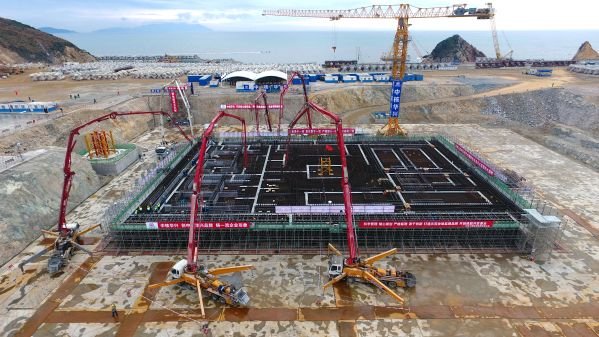China has begun pouring concrete for one of the world’s first “gen IV” nuclear reactors, the CFR-600, on the coast of Fujian province, about 400km south of Shanghai.
The 600MW demonstration unit, which is due to be complete in 2023, follows a 20MW experimental reactor completed in 2011. It is intended to be the prototype of a 1GW commercial reactor scheduled for around 2030.

The basemat for the Xiapu reactor (CNNC)
The significance of the sodium-cooled reactor is that it points the way to the “fast breeder” fourth generation designs that are expected to be adopted by the global nuclear power industry over the next century.
It is not the only design that the Chinese industry is pursuing. Another fast breeder gen IV is being built in nearby Jiangxi province. This uses “pebble-bed” fuel and a helium cooling system.
The advantage of these reactors, which use fast neutrons to split uranium atoms, is that they are about 60 times more fuel efficient than slow reactors, they generate less radioactive waste and they can be used in a “closed cycle” system, in which waste is reprocessed into new fuel.  Â
This last requirement is particularly important for China, which is planning a massive expansion of its nuclear fleet, but it concerned about future shortages of uranium. The China Institute of Atomic Energy, which designed the CFR-600, is envisaging an increase in output from 40GW in 2015 to 400GW in 2050, at which time it is forecast that it will account for 16% of the country’s 2,500GW installed capacity.
Speaking at the inauguration ceremony, Wang Shoujun the chairman of China National Nuclear Corporation commented: “The fast neutron reactor project has been recognised as China’s major scientific and technological nuclear energy programme, which is of much significance for the closed cycle of nuclear fuel, promoting the sustainable development of China’s nuclear energy and boosting the local economy.”
Further Reading:






